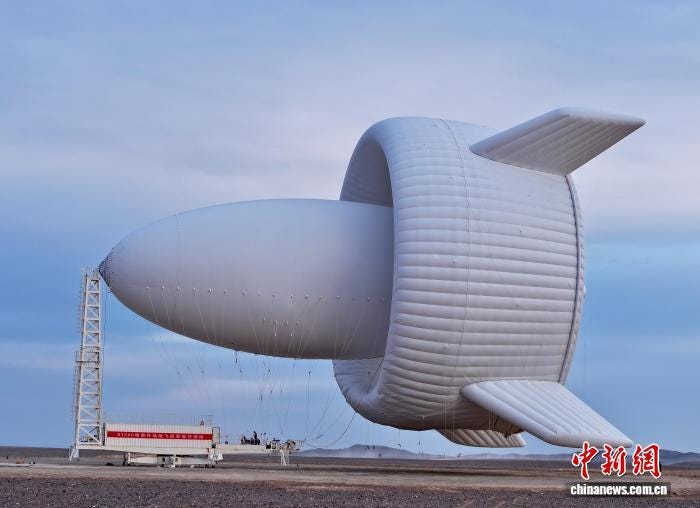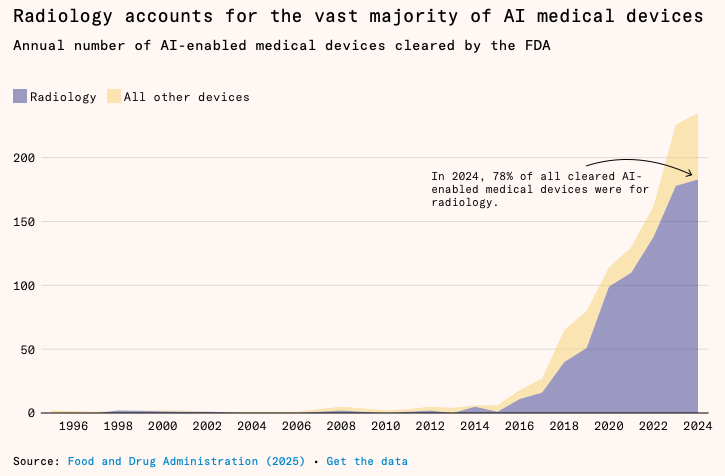Reading List 09/27/25
Energy permitting, Chicago’s “affordable” housing, China’s new arctic shipping route, Volvo’s armored cars, and more.

Welcome to the reading list, a weekly roundup of news and links related to buildings, infrastructure, and industrial technology. This week we look at energy permitting, Chicago’s “affordable” housing, China’s new arctic shipping route, Volvo armored cars, and more. Roughly 2/3rds of the reading list is paywalled, so for full access become a paid subscriber!
Some housekeeping items this week:
Paid newsletter subscribers can get 25% off on preorders for “The Origins of Efficiency” if they order from Stripe Press before October 8th. Details and coupon code below the paywall.
I wrote a whitepaper for the Aspen Institute about construction productivity.
Energy permitting
My colleague Aidan Mackenzie has a good Twitter thread on some fundamental issues with federal energy permitting. Permitting requirements are generally written with the assumption that the government will try to get stuff built, and so are designed to prevent the government from going too fast and skimping (perceived) critical steps like environmental review or stakeholder engagement. But there’s nothing that prevents the government from deliberately slowing down the permitting process for projects it doesn’t like. Right now this is getting weaponized against wind and solar projects, but the same tactics can easily be used against oil and gas projects:
Chicago affordable housing isn’t
“Affordable housing” is housing built specifically for low income residents, generally under the auspices of a specific program or tax credit system such as the Low Income Housing Tax Credit (LIHTC). Despite its name, it’s often not particularly affordable to build: California affordable housing costs 1.5x as much to build as market-rate housing. Partly this is because of the various hoops the government requires affordable housing developers to jump through. In Chicago, apparently developers are required to provide records showing if they’ve ever “invested in or profited from slavery”. Via Alec Stapp on Twitter:
BYD sets fastest production car record
The origins of Tesla can be traced to a company called AC Propulsion, which made an electric sports car called the tzero in the 1990s (which eventually evolved into the Tesla Roadster). The tzero could do 0 to 60 in 4.07 seconds (slightly slower than a base model Porsche 911), and (depending on the configuration) had a top speed of 170 miles per hour. So it’s not totally surprising to me when EVs have extremely impressive performance.
In that vein, BYD just set a new speed record for fastest production car with its Yangwang U9 Extreme EV. Via Car and Driver:
The YangWang U9 Xtreme (formerly the YangWang U9 Track Edition) just blew the whole competition out of the water. Forget about acceleration for a moment, the U9 Xtreme just hit a top speed of 308.4 mph, making it not only the fastest electric car on the planet, but the fastest car. Period.
A matter of weeks after demolishing the top-speed record for production EVs, the YangWang headed back to the ATP Papenburg oval track in Germany for another go. It was once again driven by German racer Marc Basseng, who piloted the hypercar beyond the previous record-holding Bugatti Chiron Super Sport 300+, which managed 304.8 back in 2019.
In other BYD news, Warren Buffett’s Berkshire Hathaway is fully selling its stake in the company, which at its peak was worth $7.7 billion before it began to divest in 2022.
AI in radiology
Radiology, the field of medicine which uses imaging (X-rays, MRIs, PET scans) to diagnose and treat disease, has long been thought to be ripe for disruption by AI: learning which patterns on images correspond to different diseases seems like the exact sort of thing that machine learning systems should be good at, and godfather of AI Gregory Hinton predicted in 2016 that AI would be superior to radiologists in five years. But almost 10 years later, radiology as a field is still going strong. Works in Progress has a good piece on why radiology hasn’t been disrupted:
…companies like Annalise.ai, Lunit, Aidoc, and Qure.ai have released models that can detect hundreds of diseases across multiple types of scans with greater accuracy and speed than human radiologists in benchmark tests. Some products can reorder radiologist worklists to prioritize critical cases, suggest next steps for care teams, or generate structured draft reports that fit into hospital record systems. A few, like IDx-DR, are even cleared to operate without a physician reading the image at all. In total, there are over 700 FDA-cleared radiology models, which account for more than three-quarters of all medical AI devices…
But demand for human labor is higher than ever. In 2025, American diagnostic radiology residency programs offered a record 1,208 positions across all radiology specialties, a four percent increase from 2024, and the field’s vacancy rates are at all-time highs. In 2025, radiology was the second-highest-paid medical specialty in the country, with an average income of $520,000, over 48 percent higher than the average salary in 2015.
Three things explain this. First, while models beat humans on benchmarks, the standardized tests designed to measure AI performance, they struggle to replicate this performance in hospital conditions. Most tools can only diagnose abnormalities that are common in training data, and models often don’t work as well outside of their test conditions. Second, attempts to give models more tasks have run into legal hurdles: regulators and medical insurers so far are reluctant to approve or cover fully autonomous radiology models. Third, even when they do diagnose accurately, models replace only a small share of a radiologist’s job. Human radiologists spend a minority of their time on diagnostics and the majority on other activities, like talking to patients and fellow clinicians.
Artificial intelligence is rapidly spreading across the economy and society. But radiology shows us that it will not necessarily dominate every field in its first years of diffusion — at least until these common hurdles are overcome. Exploiting all of its benefits will involve adapting it to society, and society’s rules to it.




